Sierra Tucson offers effective, comprehensive treatment for individuals struggling with addiction and mental health concerns. Learn more about the signs and symptoms of inhalant addiction.
Understanding Inhalant Addiction
Learn about inhalant addiction
Inhalants are a group of chemicals that are most commonly abused by children and adolescents, and can be found in a number of different forms, including paint, glue, aerosols, gasoline, cleaning fluids, markers, solvents, and other chemicals, and varying age groups tend to favor specific inhalants. For instance, children and adolescents between the ages of 12 and 15 often abuse shoe polish, glue, fuels, and paint, while those between the ages of 16 and 17 are more drawn to aerosols or nitrous oxide. Inhalants are consumed by inhaling the substance through the mouth or nose, sometimes concentrated in a paper bag. The high that these substances produces tends to be very short, although those who use them sometimes attempt to prolong the high by continuing to inhale their substance of choice over and over again. While inhalant use is typically not linked to withdrawal symptoms, these substances can still be dangerous and can lead to death with one single use. Thankfully, however, there are options for treatment that help individuals who are grappling with inhalant abuse.
Statistics
Inhalant addiction statistics
Data collected from the Diagnostic and Statistical Manual of Mental Disorders, Fifth Edition indicates that nearly 0.4% of young individuals between the ages of 12 and 17 meet the criteria for inhalant use disorder in a given year. This rate of abuse lowers to 0.02% amongst all Americans above the age of 18. Overall, nearly 10% of 17-year-olds report having abusing inhalants at one point in their lives.
Causes and Risk Factors
Causes and risk factors for inhalant addiction
There are many different genetic and environmental risk factors for inhalant abuse, including the following:
Genetic: Specific elements of personality and temperament, including behavioral disinhibition, are strongly linked with genetics and can present an increased risk for inhalant abuse. Young individuals with family members who are struggling with substance use disorders are more likely to abuse inhalants than their peers whose family members do not have substance use disorders.
Environmental: Inhalants are readily available and easy to access, presenting for a high risk of abuse. Other environmental factors, including maltreatment or childhood trauma or abuse, are linked with an increased risk of inhalant use disorder.
Risk Factors:
- Greater degree of behavioral disinhibition
- Homelessness
- History of family substance use disorder
- Personal history of substance use or mental illness, such as conduct disorder or antisocial personality disorder
- Involvement with gangs
Signs and Symptoms
Signs and symptoms of inhalant addiction
While inhalant abuse will develop with different signs and symptoms depending on each individual, the following are some of the most common signs and symptoms that might indicate that an individual is abusing inhalants:
Behavioral symptoms:
- Giving up on, or failing to fulfill, obligations in one’s social, work, school, or home life
- Using inhalants in situations where use could put one in harm’s way
- Continuing to abuse inhalants despite the emergence of physical or psychological problems related to use
- Using inhalants more often or in larger quantities than one initially intends
- Difficulty reducing one’s use of inhalants
- Spending a great deal of time obtaining, using, or recovering from using inhalants
Physical symptoms:
- Vision problems
- Unconsciousness
- Experiencing tolerance, which means a person needs increased amounts of an inhalant to become high
- Fatigue or tiredness
- Slowed movements
- Weakness
- Loss of coordination
- Slurred speech
- Difficulty walking
- Tremor, shaking, or spasms
- Dizziness
Cognitive symptoms:
- Having cravings, or strong desires to use inhalants
Psychosocial symptoms:
- Continuing to use inhalants despite experiencing relationship strain or other interpersonal problems
- Pleasurable feelings
Effects
Effects of inhalant addiction
Inhalant abuse can have many different negative effects, including the following:
- Injury sustained while high
- Death even in otherwise healthy individuals, known as “sudden sniffing death”; death is also possible from choking on one’s vomit or suffocating
- Lung damage
- Damage to other organs
- Cognitive impairment
- Digestive problems
- Problems with breathing
- Irregular heartbeat
- Onset or worsening of mental health symptoms
- Polysubstance use, addiction, or chemical dependency
- Poor performance at work or school
- Possible loss of job or academic expulsion
Co-Occurring Disorders
Inhalant addiction and co-occurring disorders
Those who struggle with inhalant use disorder often grapple with other co-occurring mental health conditions, including the following:
- Conduct disorder (in adolescence)
- Antisocial personality disorder (in adulthood)
- Other substance use disorders
Overdose
Effects of inhalant overdose
Effects of inhalant overdose: When an individual consumes more of an inhalant than their body can handle, that individual will suffer an overdose. Symptoms of an inhalant overdose can be risky and fatal, so if someone is displaying the following symptoms after consuming inhalants, immediate medical attention is required:
- Confusion
- Vomiting
- Unconsciousness
- Nausea
- Slurred speech
- Slowed breathing
- Heart attack













